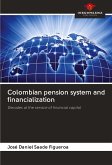Presents perspectives on managing pension funds and clarifies the international debate on social security.
This book is unique as it presents an academic and a practical aspect on managing pension funds to clarify the global debate on social security. The authors establish the basic choices in designating any system to help policy makers develop the system that achieves their many objectives. They examine reforms in Latin America to highlight flaws and to estimate the true cost of these reforms and factors affecting these costs. The authors then discuss how the United States and Spain can implement robust systems incorporating many of the ideal features. The success of reforms depends on financial innovation to mitigate key risks and some innovations are discussed, which also demonstrates how pension reform choices affect the achievement of retirement objectives. Finally, the authors examine some proposed hybrid options to show how the beneficial features of these hybrids can be captured through good design in a single fund.
Table of content:
1. A primer on pension reform issues; 2. A taxonomy of pension reform issues; 3. Evaluation of pension reforms; 4. Welfare costs defined contribution schemes; 5. The transition from PAYGO to funding with a common portfolio: application to the United States; 6. Social security reform in Spain; 7. The 'two pension fund' theorem; 8. The case for mixed systems and variable contributions: improving the performance of pension systems.
Hinweis: Dieser Artikel kann nur an eine deutsche Lieferadresse ausgeliefert werden.
This book is unique as it presents an academic and a practical aspect on managing pension funds to clarify the global debate on social security. The authors establish the basic choices in designating any system to help policy makers develop the system that achieves their many objectives. They examine reforms in Latin America to highlight flaws and to estimate the true cost of these reforms and factors affecting these costs. The authors then discuss how the United States and Spain can implement robust systems incorporating many of the ideal features. The success of reforms depends on financial innovation to mitigate key risks and some innovations are discussed, which also demonstrates how pension reform choices affect the achievement of retirement objectives. Finally, the authors examine some proposed hybrid options to show how the beneficial features of these hybrids can be captured through good design in a single fund.
Table of content:
1. A primer on pension reform issues; 2. A taxonomy of pension reform issues; 3. Evaluation of pension reforms; 4. Welfare costs defined contribution schemes; 5. The transition from PAYGO to funding with a common portfolio: application to the United States; 6. Social security reform in Spain; 7. The 'two pension fund' theorem; 8. The case for mixed systems and variable contributions: improving the performance of pension systems.
Hinweis: Dieser Artikel kann nur an eine deutsche Lieferadresse ausgeliefert werden.








